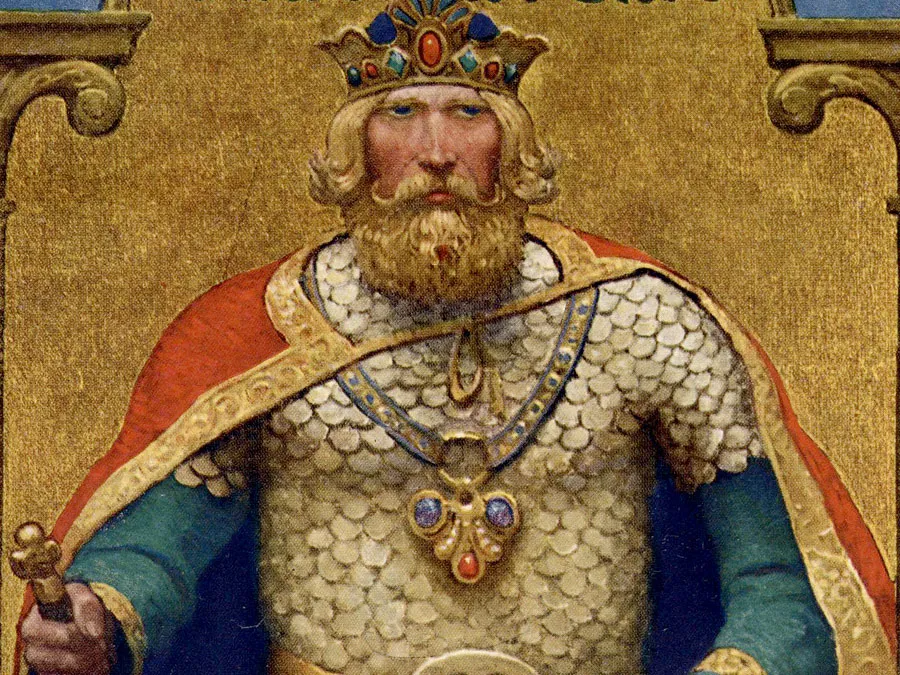Long before modern travelers compiled “bucket lists,” Greek poets and scholars celebrated a septet of architectural marvels that distilled the ingenuity of the Mediterranean-Near Eastern world. Their catalog, later titled the Seven Wonders, served as both sightseeing guide and civilizational résumé—proof that humankind could rival the gods in stone, bronze, and hanging greenery. Although only the Great Pyramid still pierces today’s skyline, the other six survive in fragments of marble, papyrus descriptions, and the collective imagination. Retracing them reveals not just lost monuments but a shared ancient conversation about scale, beauty, and hubris.
🏜️ The Great Pyramid of Giza
Raised for Pharaoh Khufu around 2560 BCE, the Pyramid began as a tomb and ended as the longest-standing wonder. 2.3 million limestone blocks, each averaging 2.5 tons, were stacked in 201 precision courses to a height of 146 meters—taller than any structure until medieval cathedrals. The ascending passages align with cardinal points to within a fraction of a degree, reflecting Old Kingdom mastery of solar geometry.
Insert image: “Sunrise gilding the Great Pyramid’s eastern face” — Caption: “The sole survivor of the Seven, Khufu’s pyramid anchors millennia of human awe.”
🌿 The Hanging Gardens of Babylon
Ancient writers placed this paradise in tiers on the banks of the Euphrates, crediting either Nebuchadnezzar II or the Assyrian queen Semiramis. Multilevel terraces—supported by waterproofed mud-brick vaults—hosted date palms, roses, and exotic cedars irrigated by screw pumps drawing river water 20 meters upward. Some scholars now argue the Gardens stood at Nineveh, but the enduring image is Babylon: stone columns draped in Azur sky-flowers against ziggurat silhouettes, a green rebuttal to Mesopotamia’s baked clay horizon.
Insert image: “Artist reconstruction of tiered gardens overlooking a river” — Caption: “A botanical marvel that blurred palace, temple, and Eden.”
🏛️ The Temple of Artemis at Ephesus
Twice destroyed and rebuilt, the final iteration (c. 330 BCE) stretched 115 meters long—larger than a modern soccer pitch—with 127 Ionic columns soaring 18 meters. Craftsmen inlaid the marble with gold leaf; Amazon warrior friezes guarded the doors; pilgrims queued to glimpse the ebony cult statue of Artemis Ephesia, breasts abounding with fertility symbols. When the arsonist Herostratus torched the sanctuary in 356 BCE, legend says the goddess could not intervene because she was busy overseeing Alexander the Great’s birth.
Insert image: “Nighttime illumination of a single reconstructed Artemis column at Selçuk” — Caption: “One lonely pillar marks a site that once out-shone every Greek temple.”
⚡ The Statue of Zeus at Olympia
Master sculptor Phidias used wood core, ivory flesh plates, and riveted gold robes to fashion a seated Zeus 12 meters tall—so vast that, wrote Strabo, it seemed the roof of the temple barely spared his head. Resting on a cedar throne studded with precious stones, the sky-god held Victory (Nike) in one hand, a scepter in the other, embodying Greek belief that proportion could channel divinity. Historians debate whether fire in Constantinople or a temple blaze at Olympia doomed the statue, but its vanished bulk still lingers in numismatic echoes on coins across the Hellenistic world.
Insert image: “Marble copy of Zeus’s head under museum lighting” — Caption: “The chryselephantine original shimmered like sunrise on a calm Aegean.”
🏺 The Mausoleum at Halicarnassus
When Carian satrap Mausolus died in 353 BCE, his sister-queen Artemisia II ordered a tomb that merged Greek columned elegance with Lycian stepped pyramids. 36 Corinthian columns supported a 24-step roof crowned by a marble quadriga of Mausolus and Artemisia in a chariot—lifting their memory 43 meters above street level. Sculptors Scopas, Bryaxis, and Timotheus filled the corners with battle friezes so dynamic that later Romans shipped surviving panels to decorate baths in the capital. The very word mausoleum is the monument’s lexical afterlife.
Insert image: “Fragmented frieze slab of horsemen from Halicarnassus” — Caption: “Even in ruin, the Mausoleum’s sculpted cavalry gallop across museum halls.”
🗽 The Colossus of Rhodes
Cast in bronze between 304–280 BCE by Chares of Lindos, the Colossus portrayed sun-god Helios crowning Rhodes’ victory over a Cypriot siege. At roughly 33 meters high it rivaled today’s Statue of Liberty, though ancient sources disagree whether it straddled the harbor mouth or stood beside the quay. Internal stone fill reinforced hammered plates; molten lead dampened oscillations in the ankles. An earthquake toppled the giant in 226 BCE, but even prone its broken limbs drew crowds for 800 years—until Arab traders sold the bronze, legend holds, to a Jewish merchant who carted it away on 900 camels.
Insert image: “Digital rendering of Helios towering over Rhodian harbor” — Caption: “A bronze beacon proclaiming island resilience.”
💡 The Lighthouse of Alexandria (Pharos)
Commissioned by Ptolemy II on an islet off Alexandria, the Pharos fused utilitarian guiding light with dynastic propaganda. With three stacked blocks—square, octagonal, and cylindrical—the tower climbed between 100–120 meters. Daytime mirrors flashed sunbeams; by night a furnace blazed behind glazed windows. Its spiral ramp accommodated pack animals hauling fuel, while carved Tritons sounded bronze horns above crashing surf. Earthquakes in the 14th century shattered the Pharos, yet medieval Arab engineers copied its design as far as the Red Sea and the Strait of Hormuz.
Insert image: “Submerged stone blocks seen through Mediterranean shallows at Qaitbay” — Caption: “Fortress foundations recycle Pharos rubble, echoing lost brilliance.”
🔄 Epilogue: Why Seven?
Greek numerology prized seven as the sum of the five classical planets plus the sun and moon—a cosmic completeness. By listing exactly seven wonders, ancient writers implied their world had achieved holistic excellence. In reality, thousands of temples and towers rivaled the famed seven; what elevated these particular sites was not just architecture but storytelling: bards aboard Aegean triremes, merchants trading papyri in Alexandria, and later Roman tourists seeking selfies in marble. Each retelling polished the list, until the wonders transcended geography to become a universal shorthand for human aspiration.
Insert image: “Montage of all Seven Wonders sketched in sepia” — Caption: “A portfolio of imagination, half grayscale memory and half golden legend.”











































